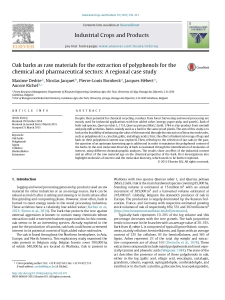Dedrie M., Jacquet N., Bombeck P.-L., Hébert J., Richel A.
Despite their potential for chemical recycling, residues from forest harvesting and wood processing aremostly used for industrial applications with low added value (energy, paper pulp, and panels). Bark ofboth oak species, Quercus robur L. 1753, Quercus petraea (Matt.) Liebl. 1784 is a by-product from sawmilland pulp mill activities. Bark is mainly used as a fuel for the same wood plants. The aim of this study is tolook at the feasibility of enhancing the value of this material through the extraction of bioactive molecules,such as polyphenols (i.e. catechin, gallic, and ellagic acids). First, the effect of industrial storage of logs andbark on their polyphenol content was explored. Then, referring to the selection of tan oaks in the past,the question of an optimum harvesting age is addressed in order to maximize the polyphenol content ofthe barks. In the end, molecular diversity of bark is examined through the identification of molecules ofinterest, using different chromatographic analyses. The results show an effect of the industrial contextand an effect of the raw material age on the chemical properties of the bark. First investigations alsohighlight molecules of interest and the molecular diversity, which needs to be further explored.
Consultez la notice complète de l’article sur ORBi

